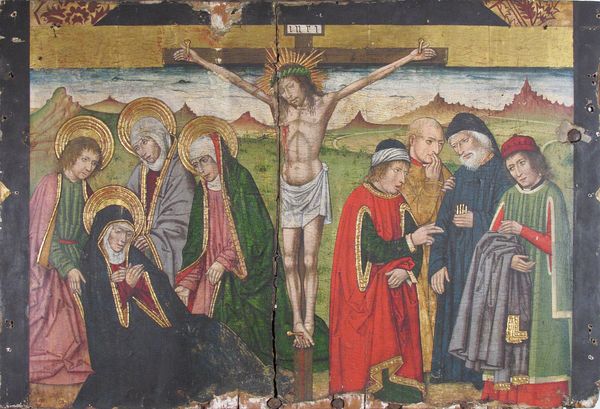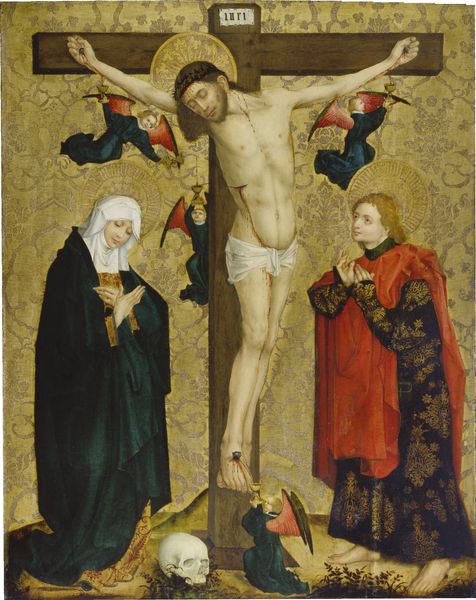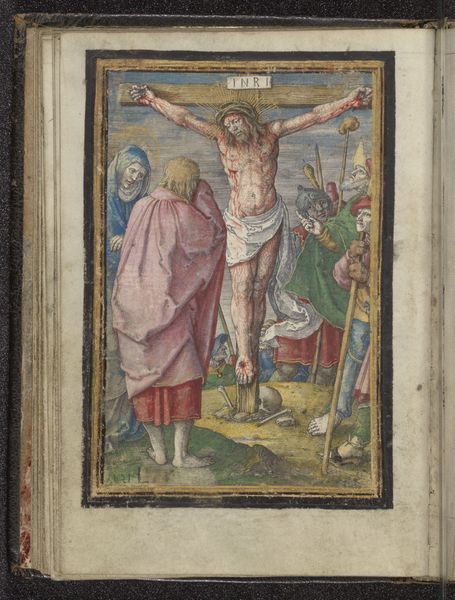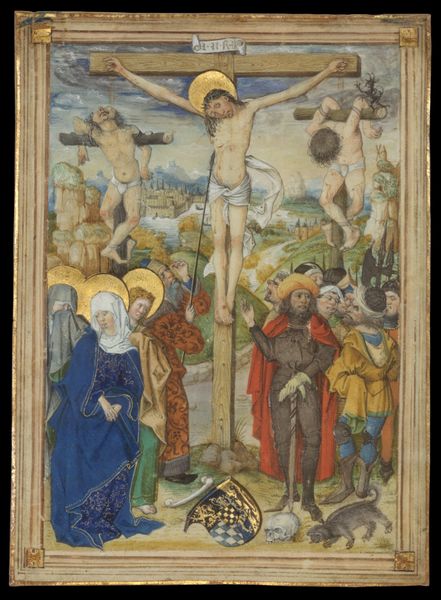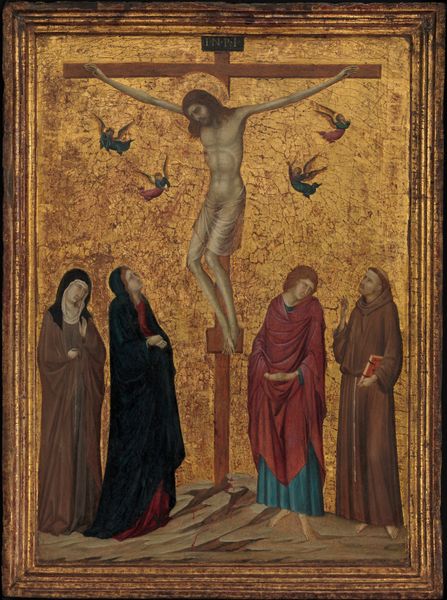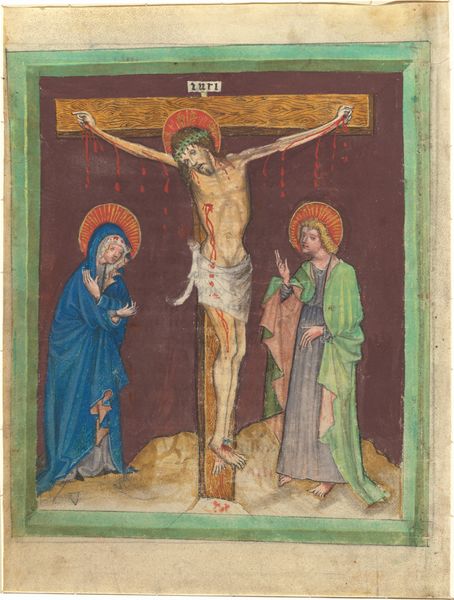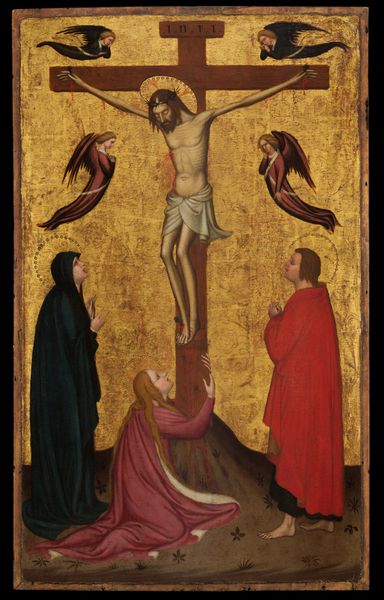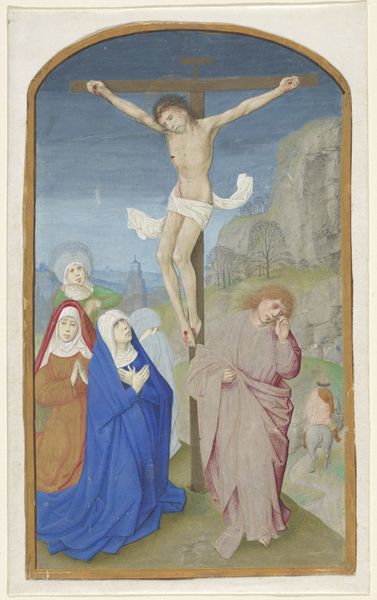
tempera, painting
#
medieval
#
tempera
#
painting
#
figuration
#
oil painting
#
history-painting
#
international-gothic
#
watercolor
Dimensions: height 104 mm, width 78 mm
Copyright: Rijks Museum: Open Domain
Editor: We're looking at "Christus aan het kruis," or "Christ on the Cross," a tempera painting by Simon Marmion from around 1460 to 1470. The muted blues and golds give it a dreamlike, sorrowful quality. How do you read the social dynamics presented here? Curator: The International Gothic style, with its emphasis on elegance and detail, often masks a complex negotiation of power. Consider how Christ's suffering, typically read as divine sacrifice, intersects with existing social hierarchies. What classes are represented? And how is their response coded to legitimize certain kinds of rule? Editor: I see figures with elaborate clothing, possibly representing the wealthy class, and then the mourning figures, including a veiled woman. What's the significance of presenting such disparity in this scene? Curator: Exactly! Notice how those witnessing Christ's crucifixion are meticulously rendered, their garments symbols of wealth and authority, passively observing a moment that arguably upends their entire social order. How does their seemingly detached grief serve the purposes of both church and state, silencing any real threat? How do women fit into this? Editor: That makes me think about how power is portrayed in religious narratives, especially in relation to marginalized people, then and now. Curator: Precisely. These depictions weren’t merely devotional; they actively constructed and reinforced societal norms. Who controls the narrative controls the meaning. How does situating artwork within contemporary intersectional narratives reveal uncomfortable truths that might otherwise be ignored? Editor: It reframes what looks like a purely religious scene into a commentary on societal control, legitimization of power, and the marginalization of certain groups. Curator: Precisely, the painting invites a broader analysis beyond its aesthetic qualities, inviting viewers to investigate the dynamics of historical events. Editor: This helps to reveal just how intricately art and power intersect! Curator: Indeed, understanding these contexts transforms the art viewing experience into a process of social awareness.
Comments
No comments
Be the first to comment and join the conversation on the ultimate creative platform.
